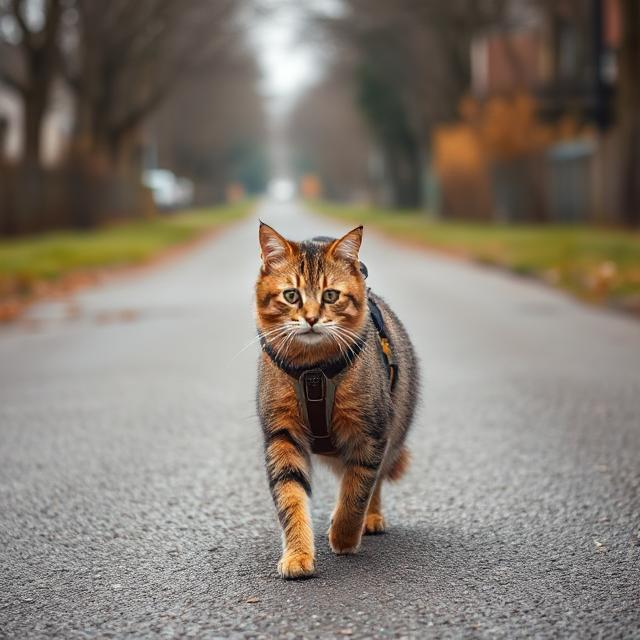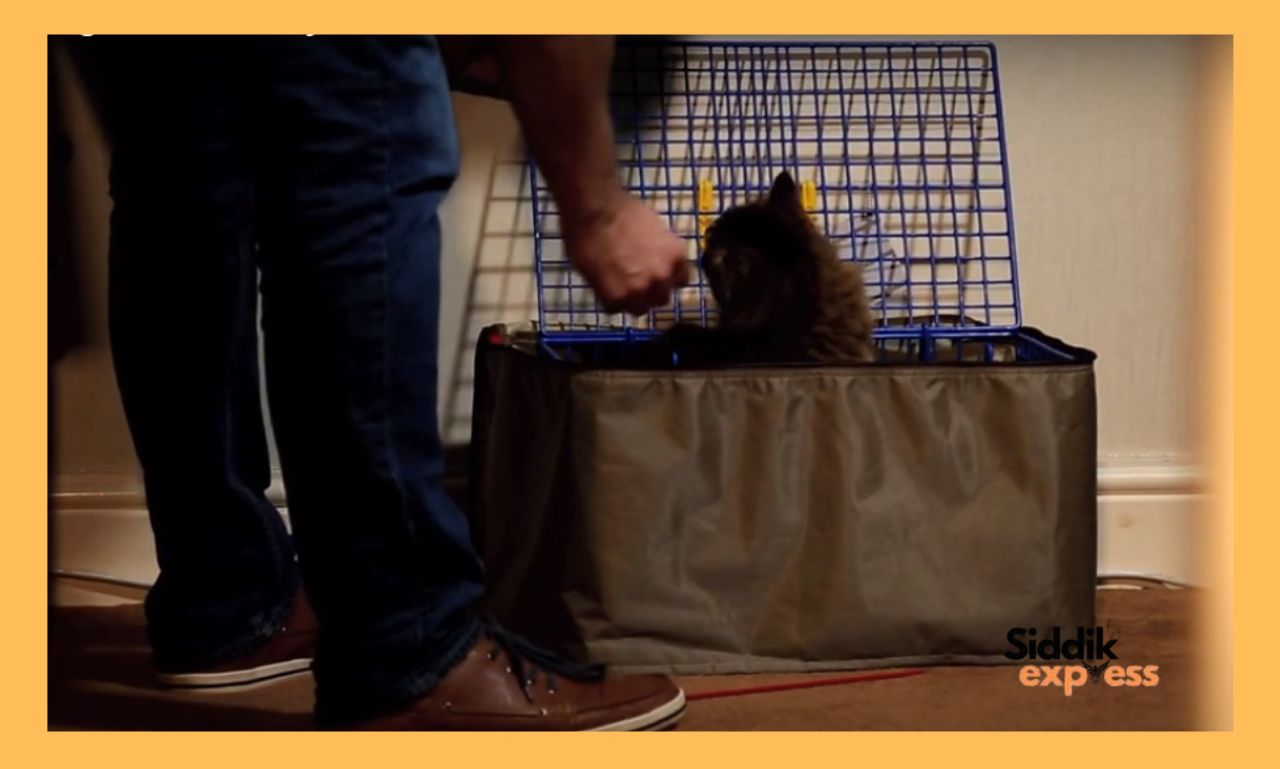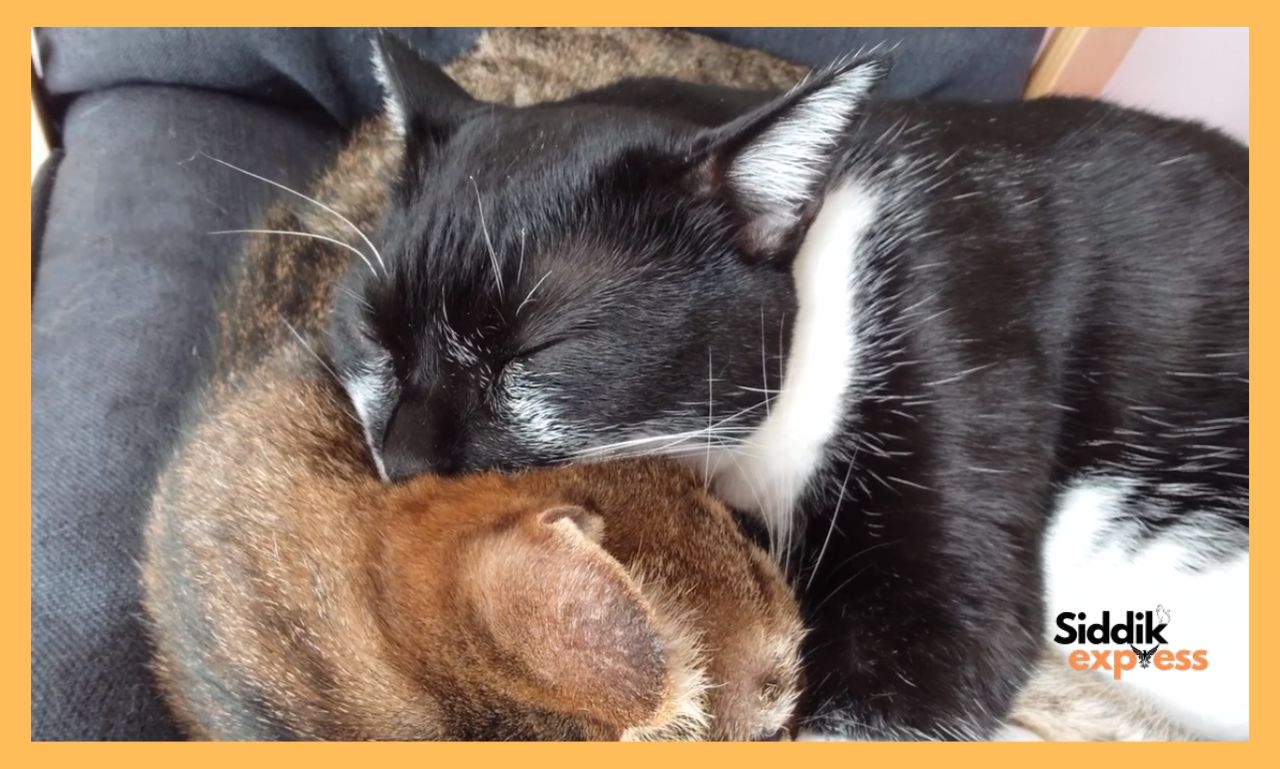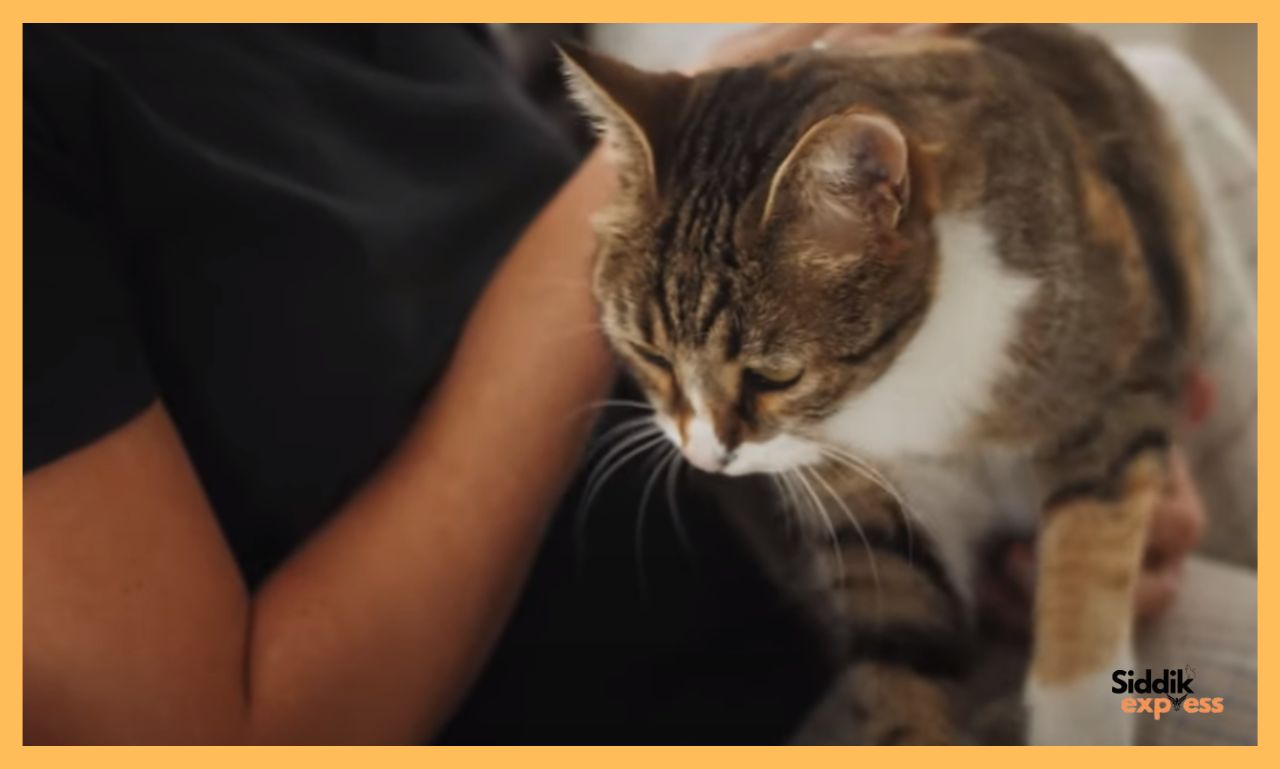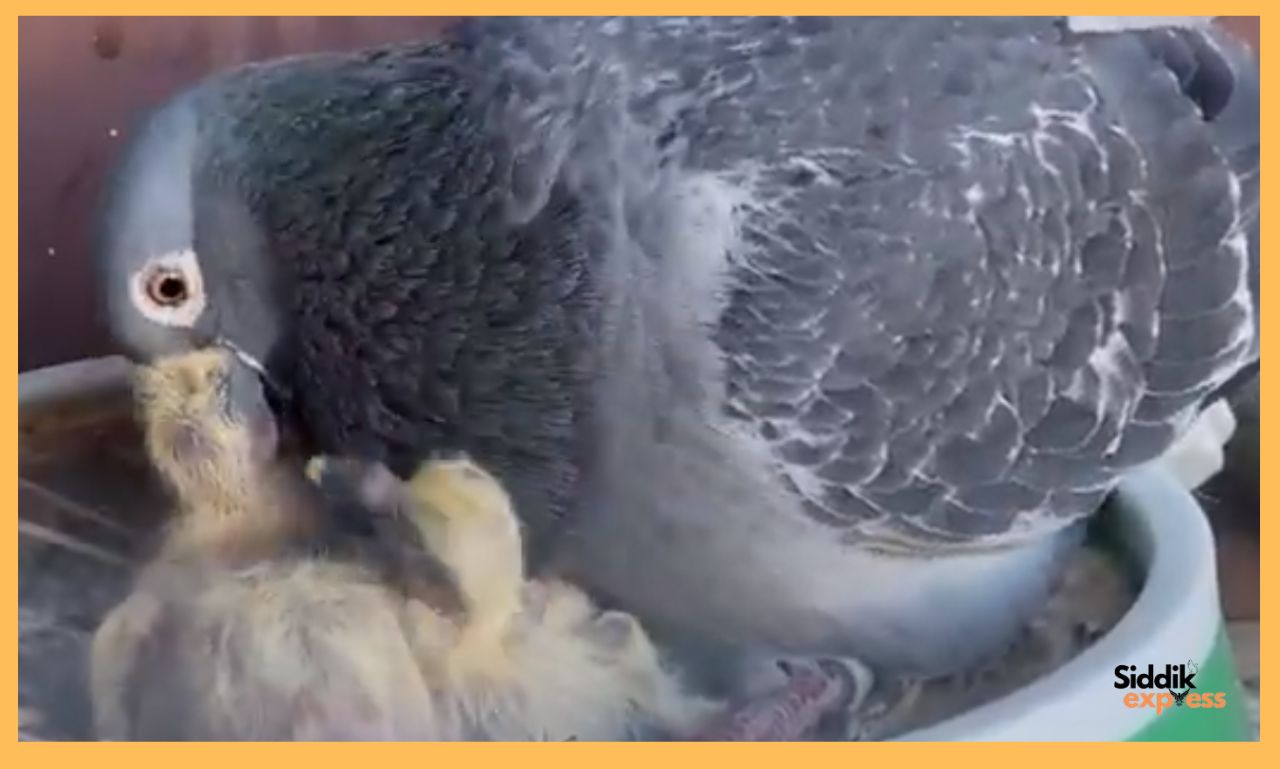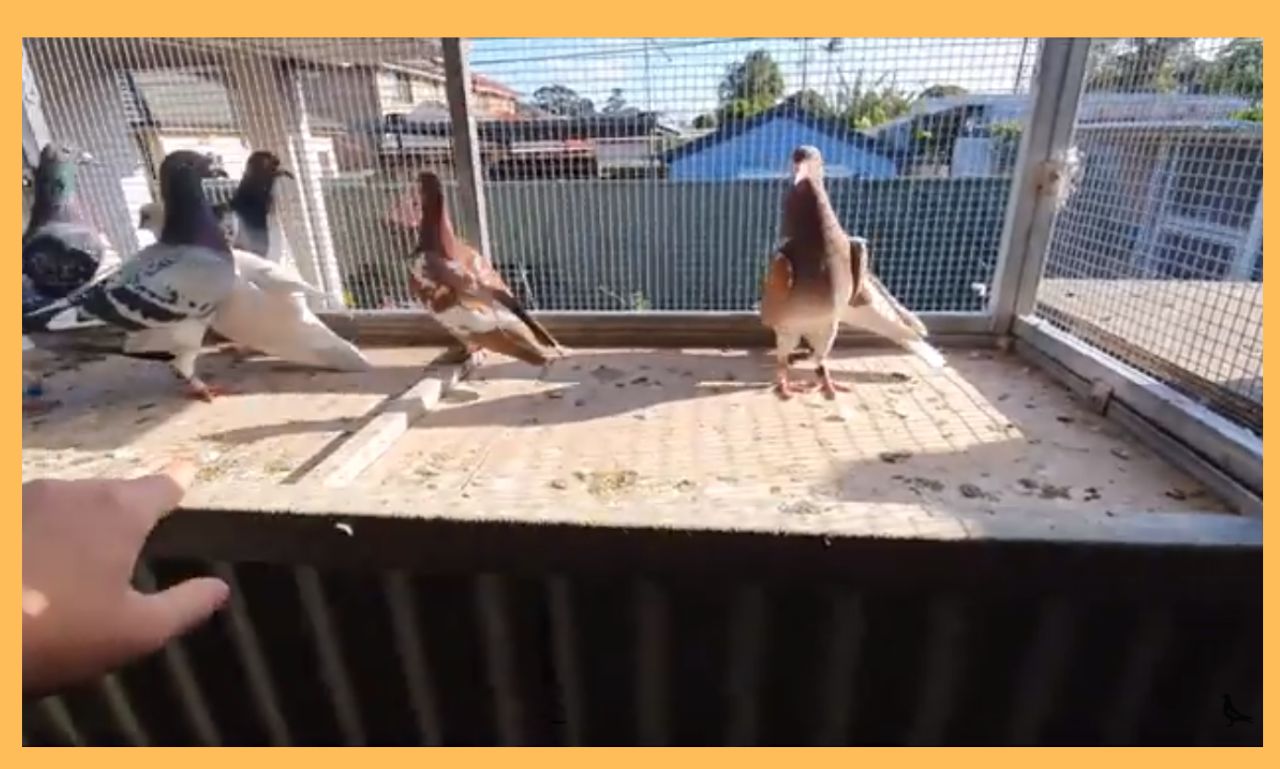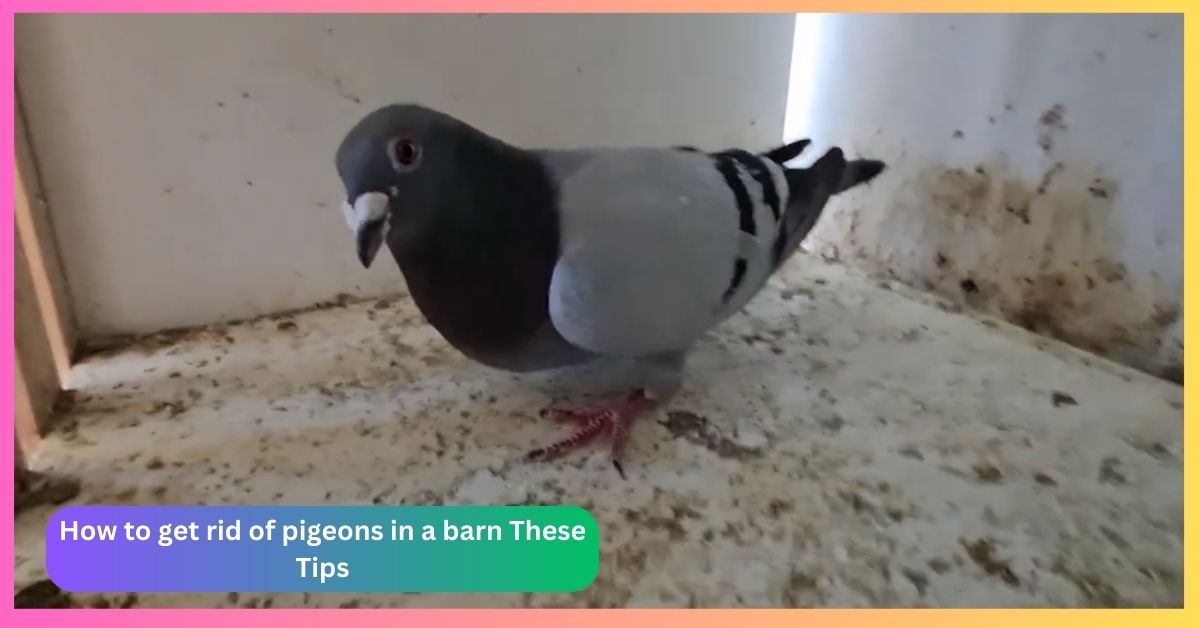Keeping cats out of your dog’s door can be tough. But, with the right strategies, you can keep your pets separate. This article will show you how to stop cats from using the dog door. You’ll learn about physical barriers, electronic solutions, and training techniques to keep your home peaceful for all.
Table of Contents
ToggleKey Takeaways
- Understand the reasons why cats are drawn to dog doors, including natural curiosity and territorial instincts.
- Explore different types of pet doors and their security features, such as electronic and magnetic options.
- Implement physical barriers and deterrents, including door guards, motion-activated devices, and strategic obstacles.
- Utilize electronic solutions to restrict cat access, such as RFID-enabled pet doors.
- Consider natural deterrents and environmental modifications to discourage cats from using the dog door.
- Train your dog to use alternative entrances, and create cat-specific entry points to maintain separate access.
- Regularly maintain and monitor your pet door security to ensure its effectiveness over time.
Understanding Why Cats Use Dog Doors
Cats are naturally curious and love to explore. They often use dog doors to check out new places. This lets them expand their territory and satisfy their curiosity.
Natural Feline Curiosity and Exploration
Cats are always curious about their surroundings. When they find a dog door, they want to see what’s on the other side. This curiosity is part of their nature, shaped by evolution.
Territory Expansion Instincts
Cats are very territorial. They use dog doors to make their territory bigger. This gives them more control and security in their environment.
Following Dogs’ Behavior Patterns
Cats might use dog doors because they see their dogs doing it. Cats often copy the behavior of other animals, including dogs. This shows how adaptable and observant they are.
Knowing why cats use dog doors helps us keep them safe. By understanding their motivations, we can find ways to keep them in their own space.
“Cats are like the unpleasantly curious relatives you wish didn’t show up at family gatherings.”
Common Problems When Cats Access Dog Doors
Letting your cat use a dog door can cause big problems. It can lead to pet safety issues and make your home less secure. Outdoor dangers like wild animals or bad weather can get in. Also, unwanted wildlife might come into your home, causing trouble and health risks.
Cats using dog doors can also make your home less safe. Their curiosity might make them go outside, leaving the door open. This could let intruders into your home, putting your family and property at risk.
| Potential Issues | Impact |
|---|---|
| Exposure to outdoor dangers | Increased risk of injury or harm to your pet |
| Unwanted wildlife entering the home | Nuisance and potential health risks |
| Compromised home security | Vulnerability to intruders and property damage |
It’s important to fix these problems to keep your home and pet safe. Knowing the risks and taking steps to prevent them can help. This way, you can keep your cat and home safe from unwanted access.
Different Types of Pet Doors and Their Security Features
Keeping your pets safe is key, and the right pet door is essential. There are many types, each with its own benefits. Let’s look at the main types and their security features to help you choose the best for your home.
Electronic Pet Doors
Electronic pet doors are great for those who want top-notch security. They use microchip or RFID tech to let only your pets in. You can set up access rules to keep your home safe while your pets roam free.
Magnetic Pet Doors
Magnetic pet doors are simple yet effective. They have magnetic flaps that open only for pets with a special collar. This keeps cat doors and dog doors secure and easy to use.
Manual Pet Doors
If you prefer something more traditional, manual pet doors are a good choice. They’re easy to install and don’t have all the bells and whistles. But, they can still be a secure way for your pets to enter and exit.
Choosing the right pet door depends on your needs and budget. Think about what you need in terms of security and convenience. This will help you find the perfect door for your home and pets.
How to Keep a Cat From Using the Dog Door
Keeping your cat away from the dog door is a big challenge. Cats are naturally curious and like to mark their territory. By understanding this, you can find ways to stop them from using the dog door. Let’s look at some effective strategies to keep your cat out.
One simple way is to install physical barriers around the dog door. You can use a door guard or motion-activated devices to scare cats away. These methods are great at blocking cat access and deter them from coming in.
You can also use electronic solutions. Magnetic pet doors or electronic doors can be set to only let in certain pets. This way, cats can’t get in, but your dog can.
Pet training is also key. Teach your dog to use other doors or create special entrances for cats. This helps block cat access and deter them from the dog door.
Using a mix of these methods can keep your pets happy and safe. Tailor your approach to your pet’s needs and your home. With a bit of creativity and effort, you can create a peaceful space for all your pets.
Physical Barriers and Deterrents
Keeping cats out of dog doors can be tough. But, there are many physical barriers and deterrents that work well. These range from simple to electronic devices, each with its own benefits for pet owners.
Installing Door Guards
One easy way is to use door guards. They fit over the dog door opening. Made from plastic or metal, they have adjustable parts for dogs to pass through but keep cats out. Door guards are easy to put up and a solid way to block cat access to the dog door.
Using Motion-Activated Devices
For a more advanced option, consider motion-activated devices. These smart gadgets detect cats near the dog door and startle them with sounds or sprays. They make the dog door an unpleasant place for cats, discouraging them from using it.
Setting Up Physical Obstacles
Setting up physical barriers around the dog door is also effective. Place big, sturdy objects like furniture or planters nearby. This creates a barrier cats are less likely to cross. Some owners also use pet proof doors or temporary barriers that can be removed when needed.
Using a mix of these barriers and deterrents, pet owners can keep cats out of dog doors. This ensures their pets’ safety and keeps the household peaceful.
Electronic Solutions for Preventing Cat Access
In the quest to keep feline foes from exploiting dog doors, innovative electronic solutions have emerged as a promising defense. From microchip-activated pet doors to collar-activated systems, these cutting-edge technologies offer a reliable way to grant canine companions entry while firmly barring the bolder, more curious cats.
Microchip-activated pet doors use the unique identification codes in your dog’s microchip to grant access. As your furry friend approaches, the door unlocks, welcoming them in while keeping cats out. This clever design ensures that only your intended pet can use the door, providing a robust pet proof doors solution.
Another innovative approach is the collar-activated system. It pairs a specialized collar with a sensor-equipped pet door. When your dog’s collar is detected, the door opens, allowing them to come and go as they please. Conversely, the door remains shut to cat deterrents, preventing unwanted feline infiltration.
Both electronic pet doors solutions leverage advanced technology to deliver a hassle-free and secure method of managing your pets’ comings and goings. By empowering your dog’s independent access while barring curious cats, these cutting-edge systems offer a versatile and reliable solution to a common household challenge.
“These innovative electronic solutions have been a game-changer in our household, allowing our dog to freely use the door while keeping our mischievous cats safely on the other side.” – Jane Doe, Pet Owner
Natural Deterrents and Repellents
As pet owners, we look for safe ways to keep cats away from dog doors. Natural deterrents and repellents are a green way to block cat access.
Safe Scent Deterrents
Cats dislike certain smells, like citrus, lavender, or peppermint. Use essential oils to keep cats away from the dog door. Place cotton balls with these oils near the door to keep cats out.
Environmental Modifications
Change the area around the dog door to keep cats away. Use smooth surfaces or sticky tape to stop cats from getting close. Also, try motion-activated devices that make sounds or lights to scare cats off.
Using these natural methods can keep cats out of the dog door. It’s important to keep all pets safe and happy.
Training Your Dog to Use Alternative Entrances
Keeping cats out of the dog door can be tough. But, it’s also key to let dogs go in and out freely. Training your dog to use other doors or go out at set times helps. This way, the dog door isn’t always open.
Positive reinforcement is the best way to train pets. Use treats or praise to teach your dog to use the new door. As they get used to it, they’ll stop trying to follow your cat through the dog door.
Having a routine is also helpful. Teach your dog to wait for a signal before going outside. Or, pick certain times of the day for them to go out. This makes it clear when they can go outside and helps avoid the dog door.
Every dog is different, so training might take time and patience. Adjust your approach to fit your dog’s needs and personality. This way, you can teach them to use other doors, making life better for both your dog and cat.
| Positive Reinforcement Techniques | Establishing Routines |
|---|---|
|
|
Using these methods in your training can help your dog use other doors. This keeps your cat out of the dog door and makes your home a happier place for all pets.
Creating Cat-Specific Entry Points
Keeping your feline friends from using the dog door can be a challenge. But, one effective solution is to give them their own entry points. By installing cat-specific doors or windows, you can meet their unique needs and preferences.
Offering a cat-friendly entry solution has many benefits. It reduces your cat’s interest in the dog door. It also lets them keep their independence and freedom. Cats are curious and love to explore, so a dedicated entry point satisfies their adventurous spirit while keeping them safe at home.
Dedicated Cat Doors and Windows
Think about installing a dedicated cat door or window in a spot your cat can easily reach. These special pet access points are made with your cat’s size and behavior in mind. They ensure a secure and comfy entry point. Look for features like:
- Smaller dimensions to fit a cat’s frame
- Magnetic or electronic locks to keep out unwanted visitors
- Weatherproofing to keep the indoor climate just right
By giving your cat their own entry point, you can stop them from using the dog door. You also let them come and go as they please.
| Feature | Benefit |
|---|---|
| Smaller dimensions | Accommodate a cat’s size and prevent larger dogs from accessing |
| Magnetic or electronic locks | Secure the entry point and prevent unwanted access |
| Weatherproofing | Maintain indoor climate control and protect against the elements |
Investing in a dedicated cat-specific entry point makes a safe and comfy space for your feline friend. It also stops them from using the dog door. This promotes a peaceful home for all your pets.
Maintaining Pet Door Security Over Time
Keeping your pet door secure is key to your cat’s safety. Regular checks and watching your pet’s actions are vital. This helps keep your home safe for your feline friends.
Regular Maintenance Tips
Check your pet door often. This includes both physical and electronic types. Look for damage or weak spots your cat might use.
Keep the door clean and well-lubricated. Fix any problems quickly to keep it working right.
Monitoring Pet Behavior
Watch how your pet acts near the dog door. Notice if they try to get in or seem more interested. This could mean you need to update your security.
Changes in your cat’s behavior are important. If they seem more curious or try to get around barriers, be ready to change your approach.
FAQ
What are the common reasons why cats use dog doors?
Cats use dog doors because of their curiosity. They also want to explore more and follow their dog friends.
What problems can arise when cats access dog doors?
When cats use dog doors, they face dangers outside. They can also let wild animals into the house. This can make the home less secure.
What types of pet doors are available, and what security features do they offer?
There are electronic, magnetic, and manual pet doors. Each has its own security features to keep unwanted visitors out.
How can physical barriers and deterrents be used to keep cats from using dog doors?
Physical barriers like door guards and motion-activated devices can stop cats. Placing obstacles in the way also helps.
What electronic solutions are available to keep cats from using dog doors?
Electronic solutions include microchip-activated doors and collar systems. These let dogs in while keeping cats out.
What natural deterrents and repellents can be used to discourage cats from approaching dog doors?
Safe scents and changes in the environment can keep cats away. They do this without harming the cats.
How can you train your dog to use alternative entrances and reduce the need for constant dog door availability?
Use positive training to teach your dog new ways to go outside. This can make the dog door less needed.
How can you create cat-specific entry points to reduce their interest in using the dog door?
Install cat doors or windows for them. This gives cats their own way in, making the dog door less appealing.
How can you maintain the effectiveness of pet door security measures over time?
Keep physical and electronic barriers in good shape. Watch how your pets behave to keep the dog door secure.
Related :How to Know If My Cat Wants a Friend | Pet Tips
Why Do Cats Put Their Paws in Their Water | Pet Behavior
Resource: Cats Education

